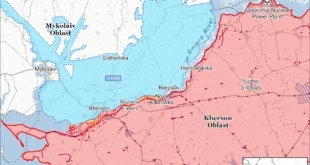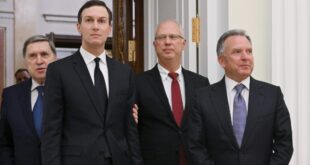The ancient Romans used to say: ‘Si vis pacem, para bellum’ (‘If you want peace, prepare for war’). Josep Borrell Fontelles, the European Union’s (EU) High Representative for Foreign Affairs and Security Policy, paraphrased this aphorism at last year’s 10th EU–African Union meeting when he suggested that arming African partners is necessary to help to silence terrorists’ guns, which reflected a significant shift in the EU’s foreign and security policy. This new approach—part of the EU’s increasing reliance on military-oriented tools to fulfil its goals to contribute to peace, security and development around the world—is in some measure embodied by the new European Peace Facility (EPF).
What is the European Peace Facility?
The EPF is part of an ambitious plan, launched by the 2016 EU Global Strategy and soon to be operationalized by the Strategic Compass, to strengthen EU security and defence and to develop an integrated approach to conflict and crises. The EPF aims to contribute to these goals by establishing a single, streamlined mechanism for allocating funding—approximately €5 billion—for EU actions with military and defence implications. These actions are not eligible to be covered by the EU’s regular budget and this is why the EPF will be financed through EU member states’ yearly contributions between 2021 and 2027. As the EPF is an off-budget mechanism, the European Parliament will have no formal oversight role with regard to its implementation.
The EPF incorporates and replaces the Athena Mechanism and the African Peace Facility, which since 2004 have funded the costs of EU military missions and support to African-led military operations, respectively. Moreover, the EPF will expand on the scope and geographic coverage of those instruments. Specifically, through the EPF, the EU will fund assistance measures aimed at strengthening third states’ defence and military capabilities, bilaterally or through international and regional organizations. It will also support the military aspects of peace operations, not just in Africa but anywhere in the world. Notably, these assistance measures could include the supply of lethal military equipment by EU member states to the armed forces of a third state or a military operation led by a group of third states. Therefore, the EPF will for the first time grant the EU the ability to use common funds for this purpose. The introduction of this equip component aims to enhance the EU’s role as a security provider and, potentially, counteract the influence of other states that have been developing stronger security ties in Africa, such as Russia and Turkey.
The use of the European Peace Facility and export controls
The use of funds under the EPF will be agreed upon by EU member states through EU Council decisions that will specify the beneficiary, scope and nature of the assistance measures provided. In case these measures will also involve transfers of weaponry, such transfers ‘shall respect the principles laid down’ in the 2008 EU common position on arms exports. Among other things, the common position requires EU member states to deny a licence for exports of military equipment that would ‘provoke or prolong armed conflicts’ or if there is a clear risk that the equipment may be used to commit serious violations of international humanitarian law or acts of internal repression. In addition, it requires member states to consider the risk that the equipment ‘may be diverted within the buyer country or re-exported under undesirable conditions’. Beneficiaries’ compliance with relevant standards in the area of arms transfers—including those established by the 2013 Arms Trade Treaty—is also listed by the EU as one of the key principles guiding the assessment of assistance measures under the EPF.
However, ensuring that any supplies of lethal military equipment are conducted in ways that comply with the provisions of the 2008 common position will be a clear challenge. In particular, the use of the EPF will probably involve transfers of arms to countries or regions that are by definition fragile and affected by political instability and armed conflicts, often involving transnational terrorist groups or armed rebel groups contending the control of national territories. These potentially include the Central African Republic (CAR), Mali, Mozambique and Somalia, where the EU is currently deploying military training missions. Other possible recipients of arms may include the African-led military operations deployed in, among other places, the Lake Chad Basin region, the Sahel region and Somalia, which are already supported financially by the EU.
Evaluating whether the strategy of equipping armed forces in contexts such as these is ultimately effective is beyond the scope of this blog, which instead provides a few illustrative examples of the challenges that these transfers could pose from an export control perspective, particularly in terms of assessing and mitigating the risk of diversion.
Supplying weapons through the European Peace Facility: Key risks
While the EPF does not limit the EU to providing lethal military equipment to support peace operations or for use in conflict settings, the experiences of security forces serving in and alongside peace operations are instructive. Diversion within such operations results from actions undertaken by negative forces (i.e. various actors opposed to the mission such as armed opposition groups and criminal gangs) and by peacekeepers themselves. Along with these diversion risks, there is the risk that supplied weapons may be misused.
Diversion risks posed by negative forces
Negative forces have seized contingent-owned equipment (COE) and recovered materiel they have lost principally through attacks on formed units. The January 2016 attack by al-Shabab against the African Union Mission in Somalia (AMISOM), in which more than 150 peacekeepers were killed and the lethal materiel from the forward operating base was looted, is widely known. However, there have been many other less well-documented cases. For example, Boko Haram factions have on numerous occasions overrun bases of military personnel serving in and alongside the Multinational Joint Task Force (MNJTF) operating in the Lake Chad Basin region—including sites at battalion strength. Robbers and burglars have successfully targeted peacekeepers’ dwellings and storage units, as well as materiel in transit. In 2014 in Libya, for example, weapons and ammunition meant to protect the European Border Assistance Mission (EUBAM) went missing from the airport in Tripoli. Diversion is also known to have occurred by road and over water in other peace operations.
Diversion risks posed by the actions of peacekeepers
Lethal materiel has also been diverted because of actions undertaken by peacekeepers themselves. Sometimes these transfers have occurred intentionally and may have resulted from strategic considerations taken in capital (such as aiding an armed actor in the conflict to achieve a political objective as is widely reported to have occurred in peace operations in Liberia, for example). On some occasions, operational or tactical considerations taken in the mission area may explain why COE or recovered materiel has been distributed to other actors. Such actions may be part of a long-term general effort to win hearts and minds, or a short-term objective to achieve a specific outcome. In other circumstances, lethal equipment has been left behind when peacekeepers have been forced to retreat in the face of an imminent attack.
Losses of lethal equipment have also occurred as a consequence of poor management of both COE and recovered materiel within peace operations. Ineffective control measures (including poor accounting procedures and less-than-best practice when it comes to physical security provisions) have facilitated corruption in which uniformed personnel have sold lethal materiel for personal gain, or resulted in losses in which the perpetrator, recipient and type or quantity of materiel involved remain unknown.
The risk of misuse of supplied weapons
There are additional concerns attached to the provision of lethal military equipment to security forces in third states operating in fragile contexts. One of the key concerns is the risk of weapons being misused and facilitating human rights’ violations. Unfortunately, allegations of persistent and widespread abuses perpetrated by these actors have been documented in different circumstances, including, but not limited to, countries that have benefited from EU military training. For instance, in CAR, armed forces lack effective civilian oversight and have often been accused of being responsible for acts of sexual violence and other forms of aggression against civilians. Allegations of grave cases of misconduct have also involved security forces that contribute to military operations that are financially and politically supported by the EU or, bilaterally, by its member states. For example, cases of unlawful killings, illegal detentions, torture and other forms of abuse have involved security forces of countries—such as Burkina Faso, Mali and Niger—undertaking counterterrorism operations in the Sahel. Allegations of acts of sexual exploitation have also involved personnel in African-led peace operations, including those that have benefited from EU financial support.
Challenges ahead
As noted above, the establishment of the EPF makes the EU able, for the first time, to use common funds to support the supply of lethal military equipment. This decision met with some level of scepticism from EU member states with a tradition of neutrality and was deemed to be controversial by several non-governmental organizations.
Critics have argued that the EPF circumvents the EU treaties prohibiting the use of the EU’s budget for military expenditures. They have also stressed the risks, illustrated above, of diversion and misuse that assistance measures involving an ‘equip’ component could pose. Questions also remain as to what types of lethal equipment will be provided. Furthermore, there are concerns that the lack of involvement of the European Parliament will mean that the EPF will not be subject to processes of parliamentary oversight—which have become increasingly common in the development and implementation of arms export controls—at either the EU or national level.
Despite these concerns, the EPF is now a reality. If it is used to supply weapons, the EU and its member states should take all possible steps to ensure that risk assessment and mitigation are done thoroughly and that this type of intervention does not exacerbate existing problems. To achieve these goals, the EU could make the provision of support under the EPF conditional on the implementation of stronger arms control safeguards and standards, including in the area of physical security and stockpile management, than those demanded by other arms suppliers. The EPF also foresees the possibility to complement arms transfers with support to beneficiaries in the management of weapons and ammunition, and even with post-shipment controls. One way of addressing concerns about risks of diversion and misuse would therefore be to build stronger links between the processes of approving arms transfers under the EPF and existing assistance activities connected to arms transfers and controls on small arms and light weapons (SALW) that the EU and its member states widely support. This would also involve ensuring that processes of post-shipment controls—such as those already adopted by some EU member states—are attached to arms transfers and that the beneficiaries of such transfers are those that already receive SALW control-related assistance and have achieved progress in this area.
These and other issues are the subject of a research project that SIPRI is currently undertaking with the aim of analysing the functioning and scope of the equip component of the EPF and the main challenges that it poses from an export control perspective. Building on previous and current relevant research, SIPRI ultimately seeks to identify ways in which these risks can be mitigated and synergies with other relevant EU initiatives promoted.
 Eurasia Press & News
Eurasia Press & News




